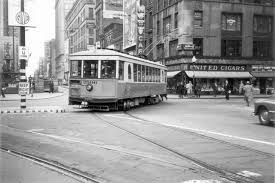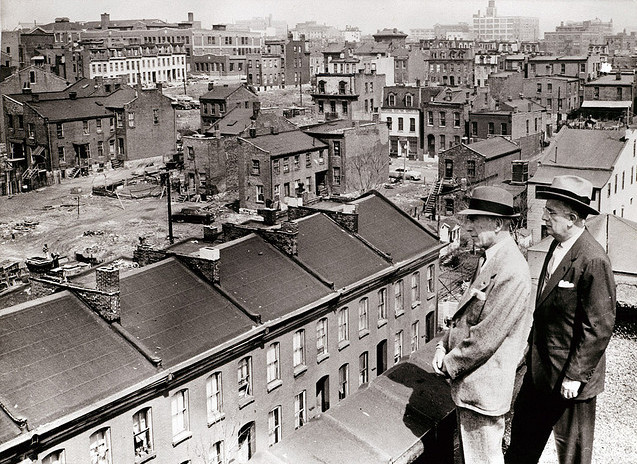Physical Address
304 North Cardinal St.
Dorchester Center, MA 02124
Physical Address
304 North Cardinal St.
Dorchester Center, MA 02124

1. This week at Market Urbanism: Are “Charter Cities” a Solution? by Sandy Ikeda What makes a charter city attractive is the prospect of rapidly instituting rules consistent with economic development in an area that might otherwise take decades to do so, offering almost overnight the chance of a better life for the citizens of an impoverished country for whom long-distance immigration is too costly. While I find myself largely sympathetic to the concept, two things bother me about it. 2. Where’s Scott? Scott Beyer is spending the holidays in his hometown of Charlottesville, VA, and will fly back Monday to Los Angeles. His Forbes article this week was titled Yimby Nation: The Rise of America’s Pro-Housing Political Coalition The grassroots activist side sits more on the West Coast, germinating among a colorful hodgepodge of non-profits, informal civic groups, beer hall meetups, blogging and social media platforms, and firebrand individuals, from beachtown gadflies to downtown flâneurs. 3. At the Market Urbanism Facebook Group: Nga Pham is “being accused of trying to build a ‘mini-hotel that will be ‘airbnb’ or causing a lot of noise and parking problems. or letting people live in the closets. If anyone wants to help with actively voicing Yimby sentiments and is from Berkeley pm me.” Malia Kristina asks for “Recommendations for articles on the future governance challenges of megacities?” Robert Stark interviews Charles Marohn from Strong Towns Roger Valdez wrote: What is to be Done?: Taking on 2017 and Beyond via David N. Welton, “Interesting and specific example of the market being at odds with “urbanism””: Homebuilders say ‘no’ to Redmond code changes via Anthony Ling: Urban myth busting: New rental housing and median-income households via Elizabeth Lasky: Should there be carbon penalties for ‘no growth’ communities? via Krishan Madan: ‘Morally criminal’ efforts by Pioneer Square developer thwarted [Seattle] via Jon […]

Stanford economist Paul Romer has proposed an intriguing concept: the “charter city.” A charter city is a newly created city governed by a country other than the one within whose borders it exists. Its residents would remain citizens of the home country. Romer offers Hong Kong as an example when it was a British colony. According to the Charter Cities website: The two prerequisites for a charter city are uninhabited land and a charter granted and enforced by an existing government or collection of governments. With the right rules, a city will naturally grow as residents arrive, employers start firms, and investors build infrastructure and buildings. What makes a charter city attractive is the prospect of rapidly instituting rules consistent with economic development in an area that might otherwise take decades to do so, offering almost overnight the chance of a better life for the citizens of a impoverished country for whom long-distance immigration is too costly. Thus Romer has suggested that a charter city be established in Haiti for Haitians left homeless by the recent earthquake and who have little hope of help from an ineffective and otherwise corrupt Haitian government. (The Charter Cities site, however, says the time is not right for this option.) While I find myself largely sympathetic to the concept, two things bother me about it. Incentive Problems The first is whether it can overcome the Public Choice problem. Although the Hong Kong example is persuasive, I wonder whether the host country would really permit the guest country to bypass enough of its political and bureaucratic interests to establish an effective rule of law, free exchange, and other things necessary for long-term economic development. And once established, would the host permit enough free immigration from its own jurisdiction and the loss of long-established political bases […]
1. This week at Market Urbansim: Is There a “Libertarian Architecture”? by Sandy Ikeda By “libertarian architecture” I don’t mean a particular style. In the absence of government intervention, however, I do think certain kinds of projects would be unlikely to emerge, and so it may be possible to rule out styles associated with such projects. 2. MU Elsewhere Stephen Smith wrote a guest post for the blog 2nd Ave Sagas: Enough Is Enough. Tell your elected officials the MTA’s costs are too high Stephen was also interviewed by Architizer.com about Why 40 Percent of Manhattan’s Buildings Couldn’t Be Built Today 3. Where’s Scott? Scott Beyer is flying tomorrow from Los Angeles to his hometown of Charlottesville, VA for the holidays. He wrote this week for Forbes about his interview with Oklahoma City mayor Mick Cornett, and for Governing Magazine about When Local Control Backfires Local governance can backfire, especially when parochial interests trump larger regional concerns. Nowhere is this more evident than in housing, where prices are skyrocketing in many U.S. cities. 4. At the Market Urbanism Facebook Group: Caleb Brown Interviewed Randal O’Toole on the Cato Daily Podcast about Trump‘s Plans for American Infrastructure Anthony Ling shared SF real estate listings from 1990 Garrett Malcolm Petersen asks about how property values would be affected if homelessness were treated differently Ethan Kent asks, “Thoughts on how the market urbanism conversation can help shape and support the placemaking movement?” Sonja Trauss announces a kickstarter for a new YIMBY comic book Todd Litman has been working with the Middle Tennessee “Moving Forward” program to help develop high quality public transit services in the Nashville region. Jaap Weel discusses plans to upzone the Central SOMA area around the new Central Subway in San Francisco. Franco Martín López wonders if someone wants to co-write an article about demolitions of entire blocks in […]

I sometimes ask myself if there is a “libertarian architecture” when thinking about what a purely libertarian culture — one that has been free from government intervention long enough to flourish — would look like. Not something I can answer in several hundred words, but let me begin. By “libertarian architecture” I don’t mean a particular style. In the absence of government intervention, however, I do think certain kinds of projects would be unlikely to emerge, and so it may be possible to rule out styles associated with such projects, from those of the Roman Forum to the Palm Islands of Dubai. My question may not seem so far-fetched to those who have read The Fountainhead, Ayn Rand’s influential novel about an uncompromising individualist architect, Howard Roark, who battles and defeats the forces of collectivism and conformity. For Roark/Rand individualist integrity means the radical rejection of traditional Palladian forms, the classical orders, and the aesthetics of the École des Beaux-Arts. Rand has Roark adopting a Frank Lloyd Wrightian, form-follows-function principle the product of which actually sounds like the hyper-modernism of le Corbusier, the architect whose (Euclidean) geometrical designs for entire cities, ironically, appeal more to the Cartesian rationality of collectivism than real human reason, which Michael Polanyi explains must actually rely tacitly on often inarticulable rules. But I don’t see why a libertarian architecture would necessarily reject traditional design. The Market Test Versus Liberating Wealth It seems that there are two somewhat contending forces to consider here. The first is the market test; the second the artistic freedom enabled by the wealth that markets create. Howard Roark’s survival depends on finding the right clients for his highly personal work, and at first there aren’t many of them. Tyler Cowen explains in In Praise of Commercial Culture that the reemergence of […]
1. This week at Market Urbansim: Same Old Story: How Planners Continue to Drive Gentrification by Nolan Gray Planners, like all professions, have their own useful mythologies. A popular one goes something like this: “Many years ago, us planners did naughty things. We pushed around the poor, demolished minority neighborhoods, and forced gentrification. But that’s all over today. Now we protect the disadvantaged against the vagaries of the unrestrained market.” Urban Mass Transit Out Of Suburban Sprawl by Sandy Ikeda The trick is to find “rules of the game” – such as private property and norms of reciprocity – that over time generate consequences that correct errors and promote rather than prevent social cooperation. While economists and social theorists since Adam Smith have understood this, many in the urban-planning profession don’t seem to have fully grasped the message. 2. Where’s Scott? Scott Beyer is in Los Angeles, and this weekend will visit Anaheim, Huntington Beach and other previously unexplored parts of Orange County. His two Forbes articles this week were Oklahoma City’s MAPS Is A Model Public Works Program and Oakland’s Warehouse Tragedy Resulted From Too Little Housing Construction As long as this mismatch remains–thousands of new people per year, only hundreds of new units–many Oaklandites will live in substandard housing, from dangerous warehouses to overcrowded apartments to poorly-maintained rent-controlled units that tenants are scared to leave. 3. At the Market Urbanism Facebook Group: Donald Shoup, Quan Yuan, and Xin Jiang wrote: Charging for Parking to Finance Public Services Anthony Ling translated Mark Lutter‘s article, Instead Of Temporary Camps, We Should Let Refugees Build Their Own Flourishing Cities to Portuguese John Morris asks, “How might the still emerging local and state government pension crisis affect land use? Zoning clearly reduces potential revenues from taxable property. Could strained budgets and insolvency make pensioners and […]

The economist F.A. Hayek explained why it’s impossible for human reason to successfully design complex systems such as markets or language. One can’t simply say, “Hey, I’d like to invent a Germanic language that does away with those troublesome genders and inflections but has plenty of Latin- and Greek-based words sprinkled in.” That would be English, of course, which evolved over centuries of trial and error. (Some might want to use Esperanto as a counterexample, but let’s face it: There are probably more people today who can speak Latin, a dead language, than can speak Esperanto.) The current fashion to construct mass-transit infrastructure in places, such as Phoenix, where none had existed before is like this in a certain sense. As Hayek explained, the problem is that reason, while powerful and creative, is imperfect and extremely limited compared to the complexity and open-endedness of the social world. As a result, all actions will have unintended consequences. The trick is to find “rules of the game” – such as private property and norms of reciprocity – that over time generate consequences that correct errors and promote rather than prevent social cooperation. While economists and social theorists since Adam Smith have understood this, many in the urban-planning profession don’t seem to have fully grasped the message. When Sprawl Was Good Since at least the 1970s in the United States the idea has been to try as much as possible to substitute mass-transit for the private car. To New Urbanists, for example, that is the key to solving a host of social ills including pollution, overcrowding, racial discrimination, oil-dependency, and alienation – all allegedly connected to the phenomenon of “sprawl.” (See, for example, the Charter of the New Urbanism.) I’ve been rereading Robert Bruegmann’s excellent book, Sprawl: A Compact History, in which he […]

Planners, like all professions, have their own useful mythologies. A popular one goes something like this: “Many years ago, us planners did naughty things. We pushed around the poor, demolished minority neighborhoods, and forced gentrification. But that’s all over today. Now we protect the disadvantaged against the vagaries of the unrestrained market.” The seasoned—which is to say, cynical—planner may knowingly roll her eyes at this story, but for the true believer, this story holds spiritual significance. By doing right today, the reasoning goes, planners are undoing the horrors of yesterday. This raises the question: are planners doing right today? That’s not at all clear. Just ask Hinga Mbogo. After emigrating from Kenya, Mr. Mbogo opened Hinga’s Automotive in East Dallas in 1986. Mr. Mbogo’s modest business is precisely the kind of thing cities need, providing a service for the community, taxes for the city, and blue-collar jobs. While perhaps not of the “creative class,” Mr. Mbogo and his small business represent the type of creative little plan that cities cultivate and depend on. Hinga’s Automotive has thrived for 19 years and looked primed for another 19. Unfortunately for Mr. Mbogo, Dallas planners had other plans. In 2005, the city rezoned the area to prohibit auto-related businesses. While rezonings—particularly upzonings—aren’t necessarily a bad thing, Dallas planners opted to force their vision through and implemented a controversial planning technique known as “amortization.” Normally when planners rezone an area, they allow existing uses that run afoul of the new code to continue operating indefinitely. These are known as “non-conforming uses” and they’re common in neighborhoods across the country, often taking the form of neighborhood groceries, restaurants, and small industrial shops. Yet under amortization, the government forces non-conforming uses to cease operating without any compensation. In the case of Hinga’s Automotive, this means […]

1. This week at Market Urbansim: China’s “Planned Capitalism” Kills Wealth by Sandy Ikeda China’s central planners haven’t even begun to appreciate, let alone practice, the lessons of the great urbanist Jane Jacobs, who viewed cities and the socioeconomic processes that go on in them as largely the result of spontaneous, unplanned entrepreneurial development. 2. Where’s Scott? Scott Beyer is in Los Angeles, and this weekend will visit South Central neighborhoods like Compton, Watts and Huntington Park. His Forbes article this week is about how Los Angeles’ Pension Problem Is Sinking The City It has the nation’s largest homeless population, the worst traffic, and numerous other service failures. Lack of money isn’t the problem, since the city has both high taxes and a wealthy population. It is instead because large sums go to employee pension benefits. 3. At the Market Urbanism Facebook Group: Roger Valdez wrote Gallup: Zoning Is Reducing American Productivity And Making The Poor Poorer Tobias Cassandra Holbrook asks about the potential impacts of property transfer tax. Jon Coppage wrote Whether Thriving or Failing, Cities Need Investment Nathan J. Yoder asks “What are good sources that compile information and long term comparative studies [about] what works best for housing for urban poor?” Isaac Mooers asks “imagine what Seattle would be like without FAR near our light rail stops.” via Krishan Madan, “A profile of the heroic Sonja Trauss and Laura Foote Clarke.“ via Michael Strong, Indy Johar recommends holding architects legally liable for their buildings as an alternative to urban planning via Will Muessig: Don’t Let Downtown Atlanta Become Privately Owned: Our Public Streets Must Remain Public via Krishan Madan: Zenefits’ Free Business Model Ruled Illegal In Washington State via Eric Fontaine: Four Million Commutes Reveal New U.S. ‘Megaregions’ via Kevin Watts, “NYT has an article on unsafe housing in Oakland, and […]

Sometimes, prosperity is an illusion. The massive building boom in the People’s Republic of China is creating outer signs of affluence, but there isn’t enough demand to put residents in the new homes. As in many similar urban projects across the country, the Chinese government has been pouring billions of dollars into Gansu Province to build a new city called Lanzhou New Area. The Washington Post reports, This city is supposed to be the “diamond” on China’s Silk Road Economic Belt — a new metropolis carved out of the mountains in the country’s arid northwest. But it is shaping up to be fool’s gold, a ghost city in the making. Lanzhou New Area, in Gansu province, embodies China’s twin dreams of catapulting its poorer western regions into the economic mainstream through an orgy of infrastructure spending and cementing its place at the heart of Asia through a revival of the ancient Silk Road. Hundreds of hills on the dry, sandy Loess Plateau were flattened by bulldozers to create the 315-square-mile city. But today, cranes stand idle in planned industrial parks while newly built residential blocks loom empty. Streets are mostly deserted. Life-size replicas of the Parthenon and the Sphinx sit surrounded by wasteland, monuments to profligacy. Spontaneous Cities China’s central planners haven’t even begun to appreciate, let alone practice, the lessons of the great urbanist Jane Jacobs, who viewed cities and the socioeconomic processes that go on in them as largely the result of spontaneous, unplanned entrepreneurial development. As an economist quoted in the Washington Post article points out, Urbanization and modernization are processes that naturally take place.… You can’t force it to happen or have 1,000 places copy the same model. Construction of these so-called ghost cities is likely financed by artificial credit expansion. In other words, people […]

1. This week at Market Urbansim: Private Neighborhoods And The Transformation Of Local Government by Sandy Ikeda In Private Neighborhoods and the Transformation of Local Government, Robert H. Nelson effectively frames the discussion of what minimal government might look like in terms of personal choices based on local knowledge. He looks at the issue from the ground up rather than the top down. Thoughts On Today’s Emily Hamilton Vs. Randal O’Toole Cato Discussion by Michael Lewyn O’Toole said high housing prices don’t correlate with “zoning” just with “growth constraints.” But the cities with strict regionwide growth constraints aren’t necessarily high cost cities like New York and Boston, but mid-size, moderately expensive regions like Seattle and Portland. 2. MU Elsewhere Emily Hamilton wrote Rules that wreck housing affordability for the Washington Times, analyzing the White House report on housing affordability President Obama deserves credit for recognizing a serious economic problem that is escaping our attention. What’s happening in Takoma is happening in every expensive city in the country, resulting in lost opportunities for the people who need them the most. Reforms to city land-use regulations would not only improve the lives of local renters, but could also improve economic growth for the whole country. Emily‘s debate with Randal O’Toole is also up at Cato 3. Where’s Scott? Scott Beyer is in Los Angeles, and this weekend will be hanging around the California beach towns of Santa Monica, Venice Beach, Manhattan Beach, Long Beach and so on. His three Forbes articles this week were: ‘Friendsgivings’ Are A Growing Urban American Tradition…Could The Fair Housing Act Be Used To Abolish Restrictive Zoning?…and Nativism: The Thread Connecting Progressive NIMBYs With Donald Trump These and countless other examples show the cognitive dissonance of some urban progressives, who blast Trump supporters for their supposed xenophobia and racism, while practicing their own brand of […]